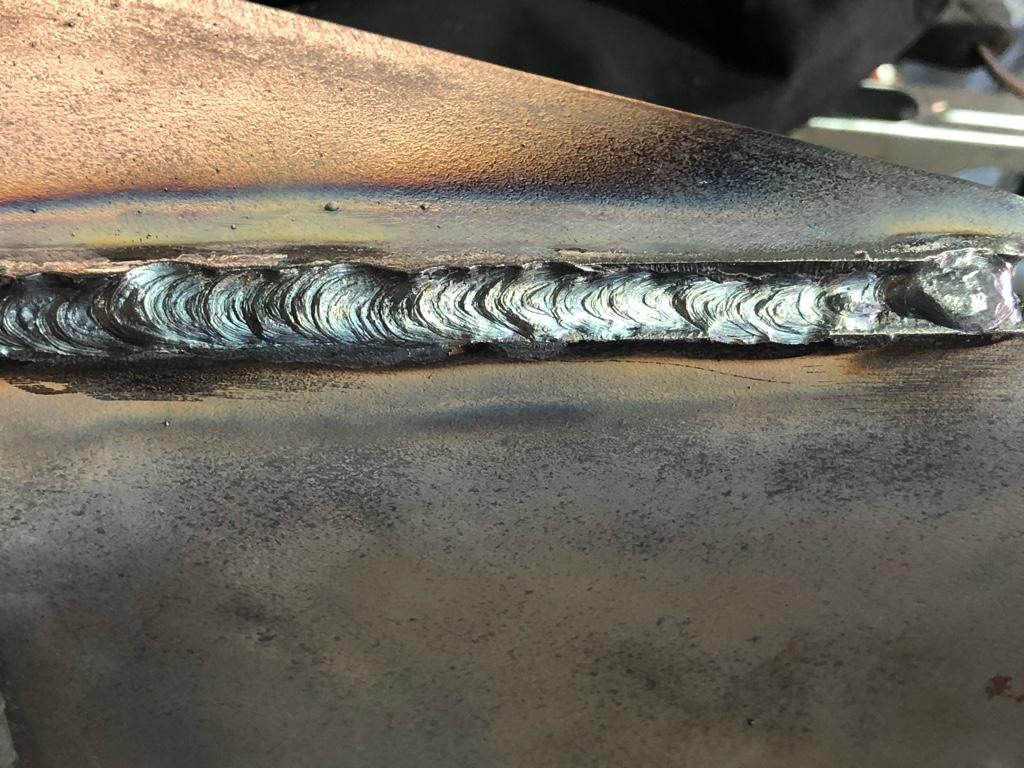Effective Ways to Prevent Weld Undercut in Your Welding Tasks
Effective Ways to Prevent Weld Undercut in Your Welding Tasks
Blog Article
Understanding the Causes and Solutions for Undercut Welding in Steel Construction Procedures
In the realm of metal manufacture procedures, the occurrence of undercut welding postures a considerable obstacle that requires a comprehensive understanding of its causes and viable options. The complex interplay of various aspects during welding operations can result in this unwanted phenomenon, affecting the structural integrity and overall quality of the welded joints - Preventing weld undercut. By dissecting the origin of undercut welding and checking out effective therapeutic actions, fabricators can raise the requirement of their workmanship and guarantee the production of remarkable steel parts
Common Causes of Undercut Welding
Frequently neglected in steel fabrication, undercut welding takes place due to numerous aspects that require thorough attention and expertise to be effectively mitigated. In addition, incorrect welding strategies, such as utilizing the wrong welding angle or take a trip rate, can likewise add to damage development. The choice of welding specifications, such as voltage, present, and cable feed speed, plays a significant duty in the incident of undercut welding.
Effect of Incorrect Welding Parameters
Incorrect welding specifications can substantially compromise the integrity and quality of welded joints in metal construction processes. The influence of inaccurate welding criteria materializes in numerous ways, resulting in architectural weak points and flaws in the bonded parts. One critical aspect impacted by incorrect welding parameters is the penetration deepness of the weld. Insufficient heat input due to low welding currents or excessively high travel speeds can cause insufficient blend in between the base metals, leading to insufficient joint infiltration and deteriorated bonds. On the other hand, too much heat input brought on by high welding currents or slow travel rates can cause burn-through and too much reinforcement, developing a brittle and unstable weld structure. Furthermore, inaccurate parameters such as improper voltage setups or wrong electrode angles can add to irregular weld bead accounts, absence of combination, and enhanced possibilities of issues like undercutting. Consequently, meticulous focus to welding parameters is paramount to make certain the production of top quality welds with the preferred mechanical buildings and structural honesty.
Impact of Improper Torch Angle
Improper lantern angle in welding operations can considerably influence the high quality and integrity of the last weld joints in steel construction procedures. Damaging is a typical welding problem where a groove forms along the weld toe, compromising the joint and compromising its architectural integrity.
A torch angle that is too high can bring about insufficient penetration, insufficient combination, and raised spatter. On the other hand, a torch angle that is as well shallow can lead to too much penetration, burn-through, and distortion of the base material. Preventing weld undercut. Correct torch angle is crucial for making certain consistent weld top quality, strength, and look
To avoid undercutting and various other flaws triggered by improper torch angles, welders have to be educated to maintain the appropriate torch angle throughout the welding process. Normal tracking and adjustment of torch angles throughout welding can aid attain audio welds with very little defects.
Role of Inadequate Welding Techniques

An additional facet of inadequate welding techniques is improper weld preparation. Insufficient cleaning of the base metals, inaccurate joint design, or inadequate side prep work can all add to damage welding. Insufficient securing gas coverage or utilizing the incorrect type of gas can result in incomplete fusion and the development of undercut issues.
To resolve the role find here of inadequate welding methods in metal construction processes, it is crucial to supply detailed training for welders. Proper education and learning on welding specifications, joint prep work, and protecting gas option can assist protect against undercut welding and guarantee top quality welds in metal construction tasks.
Reliable Solutions for Undercut Welding
Dealing with undercut welding in metal construction needs applying effective remedies to boost weld top quality and structural stability. One of the key options to combat undercut is to change welding criteria such as voltage, present, and take a trip rate to make sure appropriate warmth input and combination. By fine-tuning these settings, welders can protect against extreme melting of the his explanation base steel and filler material, lowering the possibility of undercut development.
Furthermore, proper joint prep work is critical in preventing undercut. Ensuring clean base metal surface areas devoid of impurities and using the appropriate bevel angle can aid promote better weld infiltration and decrease the danger of undercut - Preventing weld undercut. Using appropriate welding strategies, such as oscillating the torch or weaving, can additionally assist in distributing warm uniformly and loading the weld joint properly, minimizing the opportunity of undercut problems
Moreover, selecting the right welding consumables, including electrodes and filler metals, is vital in site mitigating undercut. Making use of products with suitable chemical compositions and mechanical homes can add to accomplishing sound welds with marginal undercut. Normal examination and quality assurance procedures must also be applied to identify and resolve undercut issues promptly, making certain the total honesty of fabricated metal parts.

Final Thought
To conclude, comprehending the causes and options for undercut welding in steel construction processes is critical for attaining high-quality welds. By addressing usual reasons such as inaccurate welding parameters, inappropriate lantern angle, and poor welding methods, welders can prevent undercutting and guarantee strong, durable welds. It is necessary to take note of these elements and execute efficient solutions to enhance the overall welding procedure and last product quality.

Report this page